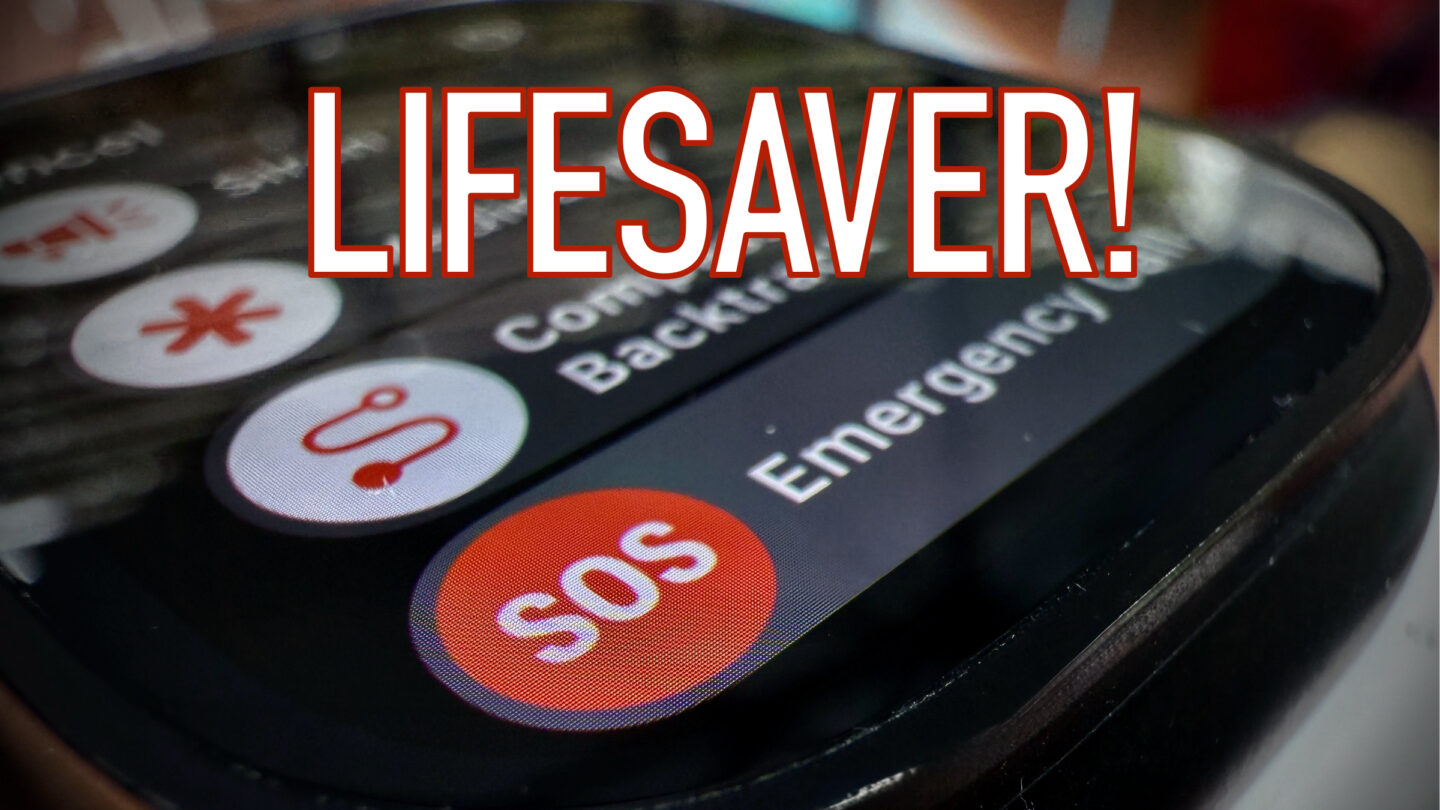The Apple Watch repeatedly saves lives around the world, thanks to its health monitoring features and emergency functions.
Here’s a comprehensive roundup of some of the most notable ways Apple Watch has saved people’s lives. From fit teenagers with undiagnosed health problems to car crash victims in danger of drowning, Apple’s smartwatch helps people cheat death in remarkable ways.
Apple Watch saves lives: How Apple’s wearable is a literal lifesaver
When the Apple Watch launched in 2015, Apple pitched it as a tech-forward fashion accessory. It came with a built-in heart rate monitor, but the sensor was mostly for fitness, not detecting life-threatening problems. Apple later stumbled onto its health and wellness potential almost by accident, according to Apple COO Jeff Williams. After customers started sharing stories of lifesaving heart rate measurements, Apple began adding more health features.
Since then, Apple Watch has gained several health and safety monitoring functions, including heart rate alerts, Fall Detection and Efmergency SOS capabilities.
Apple CEO Tim Cook often talks about the importance of Apple’s focus on health. He says Apple’s work in this area — as opposed to the creation of the iPhone, the Mac or any other product — will be “Apple’s biggest contribution to mankind.”
Here’s a roundup of the many documented instances where the Apple Watch has made a life-saving impact:
Table of contents: All the ways Apple Watch saves lives
Detecting heart arrhythmias
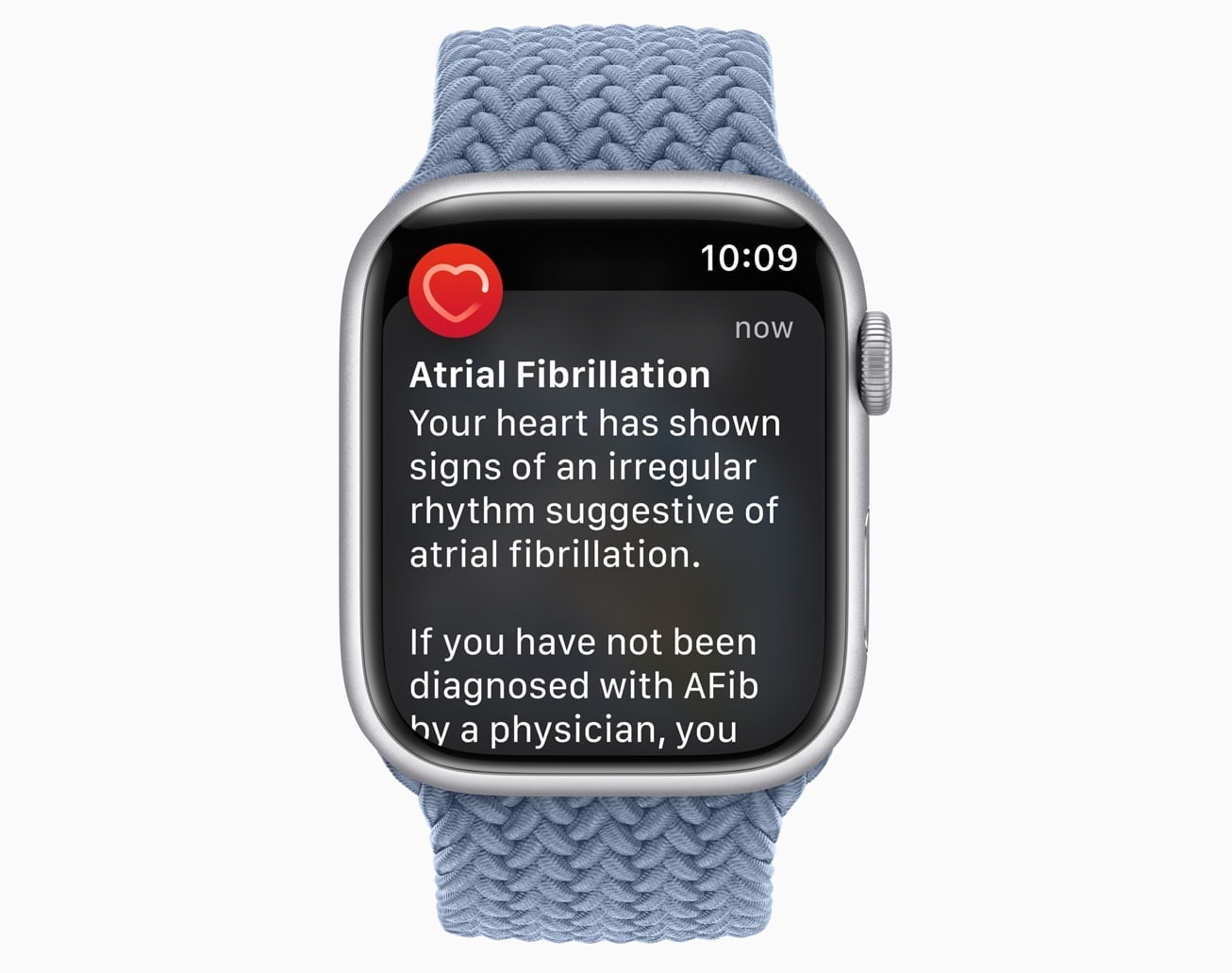
An atrial fibrillation warning on Apple Watch can increase the chance that a person feeling unwell will seek medical attention.
Photo: Apple
Atrial fibrillation is the medical term for rapid or irregular beating of the heart’s atria, the organ’s two upper chambers. AFib is dangerous because it can often be asymptomatic. Sufferers may have no idea their heart is beating irregularly, which brings an increased risk of heart failure and stroke.
The Apple Watch detects atrial fibrillation through its built-in electrocardiogram (ECG) and optical heart rate sensors. The ECG records the electrical signals of the heart, while the heart rate sensor tracks irregularities in the rhythm. When the watch detects an irregular rhythm or signs of AFib, it sends a notification to the user, prompting them to consult a health care provider. The combination of these sensors allows for continuous monitoring and early detection of AFib episodes.
It’s no glitch; it’s AFib: Ed Dentel, a healthy middle-aged man, was alerted by his Apple Watch Series 4’s ECG that he migh have atrial fibrillation. Initially dismissing the warning as a glitch, Dentel later confirmed the diagnosis at an urgent care center. Dentel was told, “Yup, you’re in AFib. This thing may have just saved your life.”
Another AFib case: Just a week after the Apple Watch’s ECG feature launched in Europe, it helped a German man discover he had atrial fibrillation. Skeptical at first, the man visited a doctor who confirmed the diagnosis.
More AFib: A man in Bothell, Washington, used his Apple Watch to detect atrial fibrillation, helping doctors identify the condition and start him on blood thinners to prevent a potential stroke.
AFib can affect anyone

Basketball star Sean Elliott’s glad he decided to heed his wearable’s warnings.
Photo: KSAT.com
AFib in a fit basketball star: NBA legend Sean Elliott credits his Apple Watch with alerting him to atrial fibrillation despite feeling no symptoms. This prompted him to seek medical attention and undergo a successful cardioversion procedure. “I had absolutely no idea,” he said.
Heart-stopping AFib: A New Hampshire man, Barry Maden, was saved by his Apple Watch 4’s ECG feature. It detected a severe heart problem that led to him being treated for atrial fibrillation. He initially bought the watch for its Fall Detection feature. However, the ECG alert prompted him to seek medical attention, where doctors confirmed the condition and performed a lifesaving procedure to stop and restart his heart.
Asymptomatic AFib: Dr. Ray Emerson, a 79-year-old veterinarian, had his life saved by his Apple Watch, which detected atrial fibrillation despite him showing no symptoms. After seeking medical attention, he underwent surgery to correct the condition, and now views the Apple Watch as a crucial health tool.
Another AFib case: A 74-year-old man, Roy Robinson, was alerted to his atrial fibrillation by his Apple Watch. That led him to seek medical attention after experiencing unusual symptoms while visiting family. After recieving treatment at the hospital, Robinson became a “mini-celebrity” and received a check-in email from Apple CEO Tim Cook.
Finding coronary heart disease (blocked arteries)
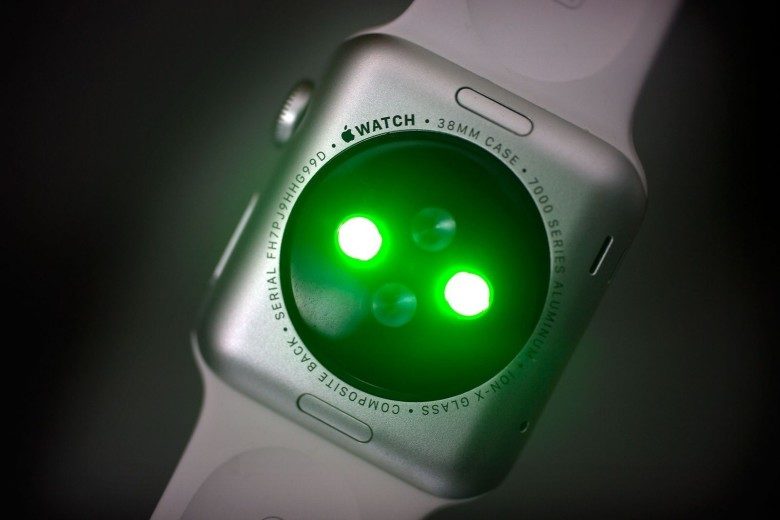
Apple Watch’s heart rate monitor can detect several potentially fatal heart problems.
Photo: Jim Merithew/Cult of Mac
Myocardial ischemia, or coronary artery disease (also called coronary heart disease), is caused by restricted blood flow to the heart muscle, often due to a buildup of plaque in the arteries. The most common cardiovascular disease, it can cause chest pain (angina) and eventually a heart attack.
Myocardial ischemia: Dutch cardiologist Dr. Ruud Koster discovered a potentially fatal heart blockage using the Apple Watch’s ECG feature, despite having no symptoms. He later confirmed the diagnosis through a medical ECG before undergoing successful heart surgery. Apple does not market the Watch as detecting myocardial ischemia, a leading cause of heart attacks. However, Koster’s case suggests the device can identify this serious condition.
Blocked arteries: Tim Cook shared a story on Twitter about how an Apple Watch alerted a man to an irregular heartbeat just two days after he began using it. The alert prompted a trip to the ER, where doctors discovered major artery blockages. The early warning allowed for timely treatment with two stents, saving his life.
Another blocked artery: Travis Chalmers, a 44-year-old firefighter from Nova Scotia, credited his Apple Watch with saving his life after it alerted him to an irregular heartbeat, signaling potential heart attack risk. He initially dismissed the symptoms as flu-like. But the repeated atrial fibrillation warnings prompted him to seek medical help. As a result, doctors confirmed he was experiencing a heart attack caused by a 100% blocked artery. Grateful for the device’s ability to detect irregularities, Chalmers thinks it played a crucial role in his survival.
More blocked arteries: 62-year-old Dennis Anselmo was alerted by his Apple Watch to a dangerously high heart rate of 210 bpm while working, prompting him to seek emergency care. Doctors discovered severe artery blockages. They said the quick response likely prevented a fatal heart attack, crediting the Apple Watch with potentially saving his life.
Coronary heart disease: 76-year-old Gaston D’Aquino’s Apple Watch alerted him to an unusually high heart rate, prompting him to seek medical attention, despite feeling fine. Tests revealed that two of his coronary arteries were blocked, and the timely intervention likely saved his life.
Apple Watch saves lives by detecting other heart problems
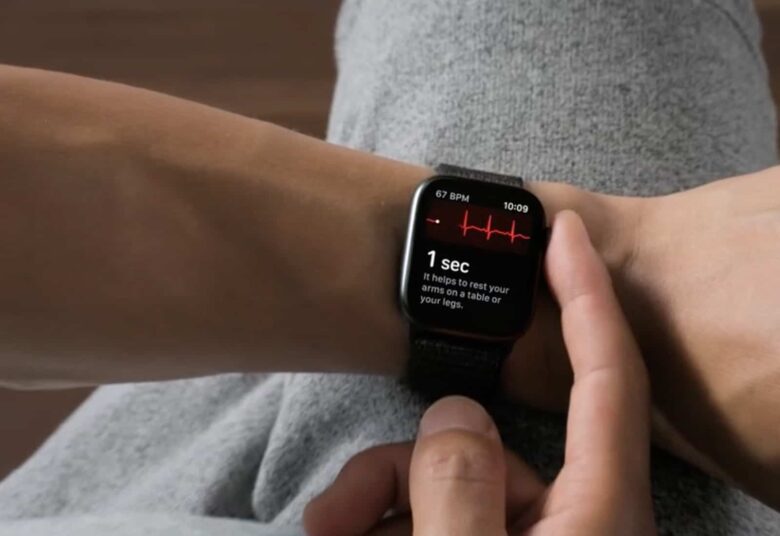
Apple Watch uses its built-in HRM and ECG sensors to detect AFib issues.
Photo: Apple
Rhabdomyolysis: In one of the earliest cases of Apple Watch saving a life, a 17-year-old football player was alerted of persistently high readings by his watch’s heart rate monitor in 2015. Paul Houle was subsequently diagnosed with rhabdomyolysis, a syndrome linked to muscle injury, which can interfere with kidney, lung and heart functions. “At the hospital, they told me that if I had gone to practice the next day that I would have lost all control of my muscles, and there was a good chance I would have fallen down on the field and died right there,” he said. “I’m very grateful for that heart rate monitor.” Soon afterward, Tim Cook personally called the teen offering an internship at Apple.
Leaky heart valves: 30-year-old British fitness enthusiast Chris Mint discovered he had atrial fibrillation and two leaking heart valves thanks to an alert from his Apple Watch. This led to lifesaving medical intervention. Despite initial skepticism from his doctor, the watch’s ECG test prompted further tests and upcoming surgery. Mint credits the treatment with potentially preventing a stroke or heart attack.
Supraventricular tachycardia: In 2019, a Reddit user shared how his Apple Watch alerted him to an abnormally fast heart rate. Subsequent tests led to a diagnosis of supraventricular tachycardia (SVT), a potentially dangerous heart condition caused by faulty electrical signals. He credits the watch’s heart rate alerts for prompting emergency care, which likely saved his life.
Hole in heart: A young Australian man discovered he had a serious heart condition when his Apple Watch alerted him to an unusually high resting heart rate. It raced to between 130 and 140 beats per minute during sleep. After seeking medical attention, he was diagnosed with a lung problem that caused blood to circulate incorrectly. After heart surgery, he credited the Apple Watch with potentially saving his life.
Most Common Health Issues Detected by Apple Watch
Detection Method
Importance / Risk Level
Detecting pulmonary embolism and blood clots
A pulmonary embolism is a blockage in one of the pulmonary arteries in the lungs, usually caused by a blood clot that travels from the legs or other parts of the body. This blockage can restrict blood flow, leading to symptoms like shortness of breath, chest pain and life-threatening complications.
Pulmonary embolism: A New York man, James Green, discovered he was suffering from a pulmonary embolism in 2017 after his Apple Watch notified him of an unusually high heart rate. “I had no idea this watch would save my life,” Green said.
Saddle pulmonary embolism: Kimmie Watkins, 29, was alerted by her Apple Watch to an abnormally high heart rate while resting in 2023. She went to the hospital, where doctors diagnosed her with a saddle pulmonary embolism. Immediate surgery saved her life.
Early detection of serious illnesses — including cancer
Blood cancer: Amanda Faulkner, a psychiatrist in New Zealand, felt fatigued and warm but dismissed her symptoms. Her Apple Watch repeatedly flagged an elevated resting heart rate, prompting her to visit her doctor. Tests revealed she had acute myeloid leukemia, a rare and aggressive cancer. Doctors said she might not have survived another 48 hours without this early warning.
Heart tumor: A woman in Maine was saved from a potentially fatal stroke after her Apple Watch alerted her to atrial fibrillation, leading her to seek medical attention in 2022. Doctors discovered that the abnormal heart rhythm was caused by an aggressive tumor on her heart. They removed the tumor through open-heart surgery, saving her life.
Appendicitis and a tumor: In New York, a 12-year-old girl named Imani Miles was alerted by her Apple Watch to a persistently high heart rate. Hospital tests revealed appendicitis and, during surgery, doctors also discovered a rare neuroendocrine tumor. Early detection allowed for prompt treatment and recovery.
Erupted ulcer: William Monzidelis’ Apple Watch saved his life in 2018 after it alerted him to an unusually high heart rate, prompting him to seek medical help for an erupted ulcer. He was quickly treated with a blood transfusion and surgery. “I would have been working in my office and they would have found me dead,” he said. “In my case, it was like a little angel watching me. It really was a magical device.”
Chronic kidney disease: 18-year-old Deanna Recktenwald’s Apple Watch alerted her to a dangerously high heart rate of 190 bpm while she was at church in 2018, prompting immediate medical attention. Doctors discovered she had chronic kidney disease, and her mother thanked Apple CEO Tim Cook for the watch’s lifesaving feature.
Monitoring blood oxygen
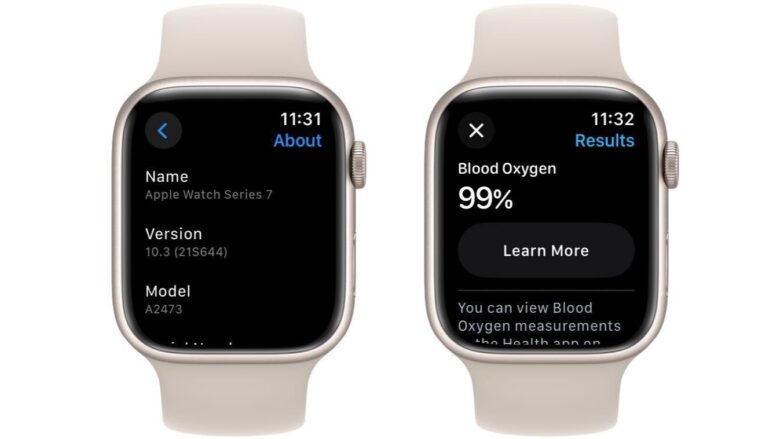
Before a patent spat, Apple Watch could analyze blood oxygen saturation.
Screenshots: D. Griffin Jones/Cult of Mac
In 2020, the Apple Watch Series 6 got a new sensor to monitor blood oxygen. It measures the oxygen saturation of the user’s blood, providing insights into respiratory and cardiovascular health.
However, in January 2024, Apple removed the blood oxygen monitoring feature from new Apple Watch Series 9 and Ultra 2 models sold in the United States due to a patent dispute with medical technology company Masimo, which claimed that Apple’s pulse oximetry technology infringed on its patents. To comply with a ruling from the U.S. International Trade Commission, Apple disabled the feature on subsequent Apple Watch models sold in the United States.
The feature still works on some Apple Watch models, though — and it’s still saving lives.
Gasping for air in midair: On a Ryanair flight in 2024, Dr. Rashid Riaz used a flight attendant’s Apple Watch to check an elderly passenger’s blood oxygen levels when she became short of breath. Detecting dangerously low oxygen saturation, he was able to stabilize her until the plane landed and she could receive further care.
Apple Watch saves lives with Fall Detection and Crash Detection features
All Apple Watch Series 4 and newer models include Fall Detection, which can automatically call emergency services if a hard fall is detected. Apple Watch Series 8 and new models offer a similar feature, Crash Detection, which can identify severe car accidents and alert responders.
Emergency SOS and location sharing for rescues
The Apple Watch’s Emergency SOS feature lets users quickly contact emergency services by pressing and holding the device’s side button. Launched with watchOS 3 in September 2016, this feature automatically dials emergency services and shares the user’s location with emergency services and designated emergency contacts (such as your parents or spouse).
Saved from rough seas: Rick Shearman, an experienced swimmer, was caught in riptides off the coast of Australia during a morning body surfing session and was unable to return to shore. Using the SOS feature on his Apple Watch Ultra, Shearman called emergency services, leading to a dramatic helicopter rescue. The precise location data from his watch significantly reduced the search area, ultimately saving his life in the rough seas.
Rescued by helicopter: Also in Australia, a kayaker was swept over 2 miles out to sea, but was able to summon help using his Apple Watch’s Emergency SOS feature. This led to his rescue by helicopter, with responders noting that the watch’s GPS signal played a key role in his safe recovery.
Swept out to sea: A woman paddleboarding near Massachusetts was rescued after using her Apple Watch to call 911 when strong winds carried her out to sea. The watch’s GPS provided precise coordinates, enabling rescuers to reach her, and she expressed relief, thankful for the lifesaving technology.
Saved in the great outdoors
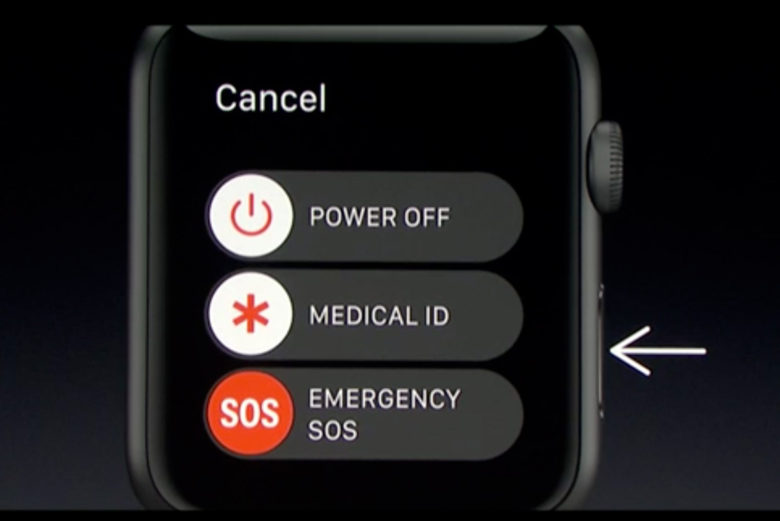
The Apple Watch’s Emergency SOS feature can call help when you’re in trouble.
Photo: Apple
Knocked off a jet ski: Phillip Esho, knocked off his jet ski in Lake Michigan, used his Apple Watch’s SOS feature to call 911, which led to his rescue by helicopter and emergency boats. Esho credits the watch for saving his life, as he had lost his phone and was unable to get help otherwise.
Paralyzed in bike crash: After a severe mountain bike crash left Ryan McConnaughey paralyzed and unable to move, he used his Apple Watch to call for help, saving his life when his phone was out of reach. Thanks to the quick response from emergency services, McConnaughey survived the accident, underwent multiple surgeries, and is now recovering, regaining some mobility.
Saved from rising flood water: A 20-year-old woman in Florida used her Apple Watch to locate her iPhone and call 911 after her car flipped into a ditch and began filling with water. The Apple Watch helped her survive the accident, as first responders arrived just in time to free her from the submerged vehicle.
I’ve fallen and I can’t get up: In Munich, an 80-year-old woman fell in her apartment, and her Apple Watch automatically alerted emergency services, transmitting her location and notifying her son. First responders and the fire department were able to reach and assist her.
Home alone: Kate Donald, a woman with epilepsy in Sydney, suffered a seizure and fell unconscious while home alone. Her Apple Watch Series 4 automatically alerted emergency services and her husband, who received real-time updates as she was taken to the hospital.
Car crashes and horrific falls
Car crash: The Apple Watch’s Fall Detection feature helped save 87-year-old Dotty White after a car accident by automatically contacting emergency services and her family when she couldn’t reach her phone. The alert enabled her children to quickly respond. Despite suffering broken bones, White said: “It’s pretty nice to just have it on your wrist.”
Octogenarian fall: 83-year-old William Fryer’s Apple Watch detected a fall and sent an SOS message to emergency services, leading to timely medical intervention. The hospital later discovered a large blood clot in his chest, and thanks to his health data and quick surgery, Fryer recovered and is back to walking.
Serious face plant: A 67-year-old man in Norway was saved by his Apple Watch Series 4 after fainting and suffering a serious fall in his bathroom that left him unconscious. The watch’s Fall Detection feature automatically alerted emergency responders, who found him with facial fractures and potentially saved his life.
Fractured spine: A New Jersey hiker, James Prudenciano, fell down a cliff and fractured his back, but his Apple Watch’s Fall Detection feature contacted 911, potentially saving his life. After the fall, he was rescued by a passing boat and met emergency services thanks to the watch’s timely alert.
Falling off a ladder: 92-year-old Jim Salsman fell over 20 feet from a ladder while alone on his farm in Nebraska. His Apple Watch’s Fall Detection feature automatically alerted emergency services and provided his GPS location, enabling a swift rescue.
Hit by a car: Tony Jauncey, 82, was struck by a car in Kidderminster, England. His Apple Watch detected the impact and immediately called emergency services, ensuring he received prompt medical attention.
Caught in a flood: After a U.K. cyclist was swept away by a flooded river, he used his Apple Watch to call for help. “He was speaking to our fire control whilst he was clinging onto a tree, via his Apple Watch, which worked wonderfully well for us to actually get to him as quickly as possible,” said a U.K. station commander.
Apple Watch saves lives … and will continue to do so
The Apple Watch’s evolution from stylish wearable to lifesaving health device is one of modern tech’s most profound transformations. With every software update and hardware redesign, Apple doubles down on its commitment to health, fitness and safety. And the real-world results prove nothing short of remarkable.
These stories from around the globe show how the Apple Watch moved far beyond tracking steps and delivering notifications. The Apple Watch saves lives, and it will continue to do so in the future. Apple continues to work on pervasive health monitoring of other key vitals, including “holy grail” measurements like blood glucose levels and blood pressure. If the Apple Watch finally adds these long-rumored features, it will save more lives than ever.
As Apple continues to innovate in the health tech space, one thing is clear: For many, the Apple Watch isn’t just a smartwatch. It’s a silent guardian on the wrist, ready to step in when seconds matter most.
